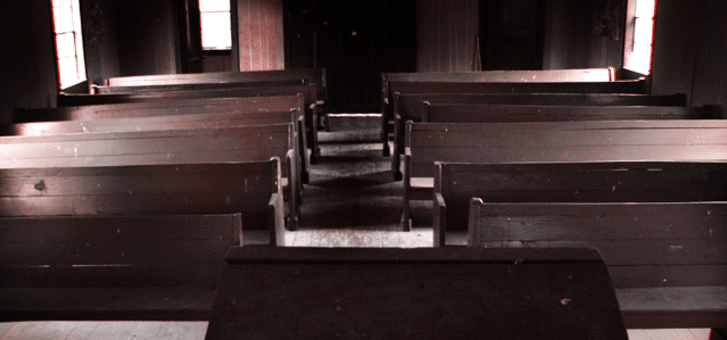It’s boring. That’s the top-ranked answer (42 per cent) among reasons given by infrequent attenders and non-attenders for not going to church (see “Top 10 reasons people don’t go to church”).
That’s the results coming from the Australian Community Survey (ACS), with responses from some 8500 people across into eight community types (with more than 1000 responses from each). The research was conducted by Perth’s Edith Cowan University and National Church Life Survey Research (NCLS).
However, it isn’t quite as simple as that, says Dr John Bellamy, who was involved in designing the survey and led the preparation of the book Why People Don’t Go to Church,* which derived from the research. Bellamy is a senior researcher with NCLS and is based at Anglicare (NSW).
“The reasons boil down to a number of things,” he says. “One that stood out in the research was the importance of relationships. We noticed in the data that whether or not the spouse was attending church was an important factor and whether you yourself attended."
“Also, we noted the role of friends. And even going back further in a person’s religious upbringing, we noted the role of parents. So those factors together were important in explaining why people do or do not go to church.”
On their own, each factor probably doesn’t account for whether a person attends church or not. Other factors impact as well, such as the kind of things that people believe.
“You’d expect a very strong correlation between whether people hold Christian beliefs and whether they’re involved in church. But we noted a range of other things too, such as the sort of attitudes that people have towards church and churchgoing.”
Other reasons given include lack of motivation—which is not a rejection of churches—but many don’t seriously consider church involvement or are more attracted to other activities. There’s a lack of time for some who show no hostility to church, but have other priorities. And some have a lack of access to a church or one of their chosen denomination.
Top 10 reasons people don’t go to church(Among infrequent attenders and non-attenders) Boring or unfulfilling church services 42% Source: Why People Don’t Go to Church, 1998 Australian Community Survey |
Loss of confidence
Added to this is a loss of confidence in churches in Australia. A survey in 1983 showed 56 per cent of respondents had confidence in the churches, but this had fallen to 39 per cent by 1998 (see page 26). It should be noted that all institutions have suffered from loss of confidence in recent years, reflecting a growing cynicism about them. The hardest hit were banks after deregulation, at a high of 87 per cent in 1983, to 21 per cent in 1998.
“Perhaps the story differs from one institution to another,” says Bellamy, “but it’s important to see that the lessening confidence in the church was not just the church in isolation, but something that seemed to be a wider trend in the society. The reasons for it aren’t really explored . . . because we were really trying to understand why people aren’t involved in church. But it would make an interesting project to work through why there’s been that loss of confidence, not only in churches but in other groups as well.”
Attracting newcomers
Churches that attract and keep newcomers tend to have certain characteristics, according to the research findings. Why People Don’t Go to Church lists five:
- A sense of vision or direction. Newcomers are more often found in churches where there is a strong sense of direction to which attenders are committed.
- Leaders empower attenders. Newcomers are more often found in churches where leaders promote the gifts and skills of others and listen to the ideas of attenders. This may reflect a strong community life, which is attractive because everyone’s involvement is seen to be valued.
- Attenders invite others to church. There is a strong relationship between the presence of newcomers and attenders inviting others.
- ontemporary worship. This is not surprising when most newcomers are aged between 15 and 39, and there is a strong preference for contemporary worship among younger attenders.
- Growth in faith and movement toward commitment. Newcomers are more often found where there’s a high priority placed on developing people’s faith. With newcomers still coming to grips with issues of faith, they’re more likely to be found in congregations where attenders report having grown in faith in the past year.
Good news for churches?
Despite the trends, there is good news for churches.
"I think we can be encouraged with the importance of the congregation and the formation of faith. That emerges in our material,” says Dr Bellamy.
“We know that having a church upbringing has some kind of an impact on whether people are involved now. Its impact isn’t perhaps as great as many people would expect, and that’s certainly a matter for reflection with the churches."
“We also noted that among people who had left church life, that their adherence, their holding on to Christian beliefs, appears to diminish as time goes on. We noted a fairly clear lineal relationship between the length of time they were out of church life and whether or not they held orthodox Christian beliefs. That says to us that involvement in a congregation is important to the building up of that kind of faith and, indeed, the maintenance of it."
“It’s encouraging to realise the importance of congregations in the maintenance of the faith across Australia. That role emerged fairly clearly in our data.”
Challenges for churches
To be more effective in the community, there are a range of things a church can do, Bellamy says. The first, and perhaps the most obvious is for churches to encourage church attenders to invite others, then to make sure that there are some activities that are appropriate for new people.
“It seems that the process of entering into churches is helped by relationships. This is something that’s been picked up in other material that NCLS has produced regarding the importance of inviting people into church, having an environment that’s conducive to newcomers and thinking about issues such as how visitors are to be followed up."
“All these assist people to come to grips with what church is about and to feel comfortable being involved. And it’s certainly important in those initial stages when there are lots of questions about belief and so on that people need to work through. But it’s important for them to feel comfortable there while they then start to work through those issues with other Christian people.”
What is noted in Why People Don’t Go to Church is the relationship between the presence of contemporary worship and the percentage of newcomers in congregations.
“And when it’s tested against other factors, it emerges as one of the more important factors,” reports Dr Bellamy. “That’s saying to us that, in the process of working out what’s negotiable and what isn’t negotiable in church life, churches need to think carefully about whether they should embrace more contemporary styles of worship or other sorts of contemporary forms of meeting, because that appears to be related to the flow of newcomers and may well help to explain it.”
He recognises that some will react against contemporary forms of worship. Others, though, will react against traditional forms of worship.
“But I think we need to recognise that the balance is moving and that those who react against traditional forms will be growing in number. And that’s particularly so among younger people who haven’t had much experience at church life."
“One of the other things we noted was that there are now less than half, something like about a third, of current primary school-aged children who had some kind of frequent church involvement, so that’s a real shift [down] from even 20 years ago.”
Sources of peace and wellbeingTime with family 89% Source: Why People Don’t Go to Church, 1998 Australian Community Survey |
Churches experimenting
In an attempt to connect more closely with their communities, churches are attempting a variety of programs and activities. A church in Sydney, for instance, runs a free Christmas lunch for any who are lonely, and regular “Family Fun” days. Another church that developed in a residential growth area of a large city has grown to 250 mainly with contacts made through a sports centre it built to serve the community.
A program called Spirituality in the Pub involves invited speakers talking for 15 minutes about some aspect of their faith, followed by about an hour of casual discussion. As the name suggests, this happens in a hotel. And cafe churches are also developing in Australia, particularly aimed at young adults living in inner cities.
“If we want to reach new generations of Australians, we need to think about the form of church life we’re offering them,” says Dr Bellamy. He recognises these “more experimental and adventurous” approaches as new forms of ministry. He suspects their value is “to try and break the mould of what a typical congregation is like, and demonstrate to the surrounding community that congregations can come in different forms.”
It’s too early to predict if these will take off in a big way.
Room for optimism
Dr Bellamy doesn’t see the churches or Christianity as under threat. He talks of theories of secularisation of the 1960s that suggested this would happen, but almost 40 years on this has not proved to be the case. He says, “My confidence is in what God is going to do in society. We’re always seeing new forms of activity as the church is reaching out and people being improved in church life. That gives me hope that the churches are connecting effectively in society.”
* John Bellamy et al, Why People Don’t Go to Church, Openbook Publishers, Adelaide, 1998.





